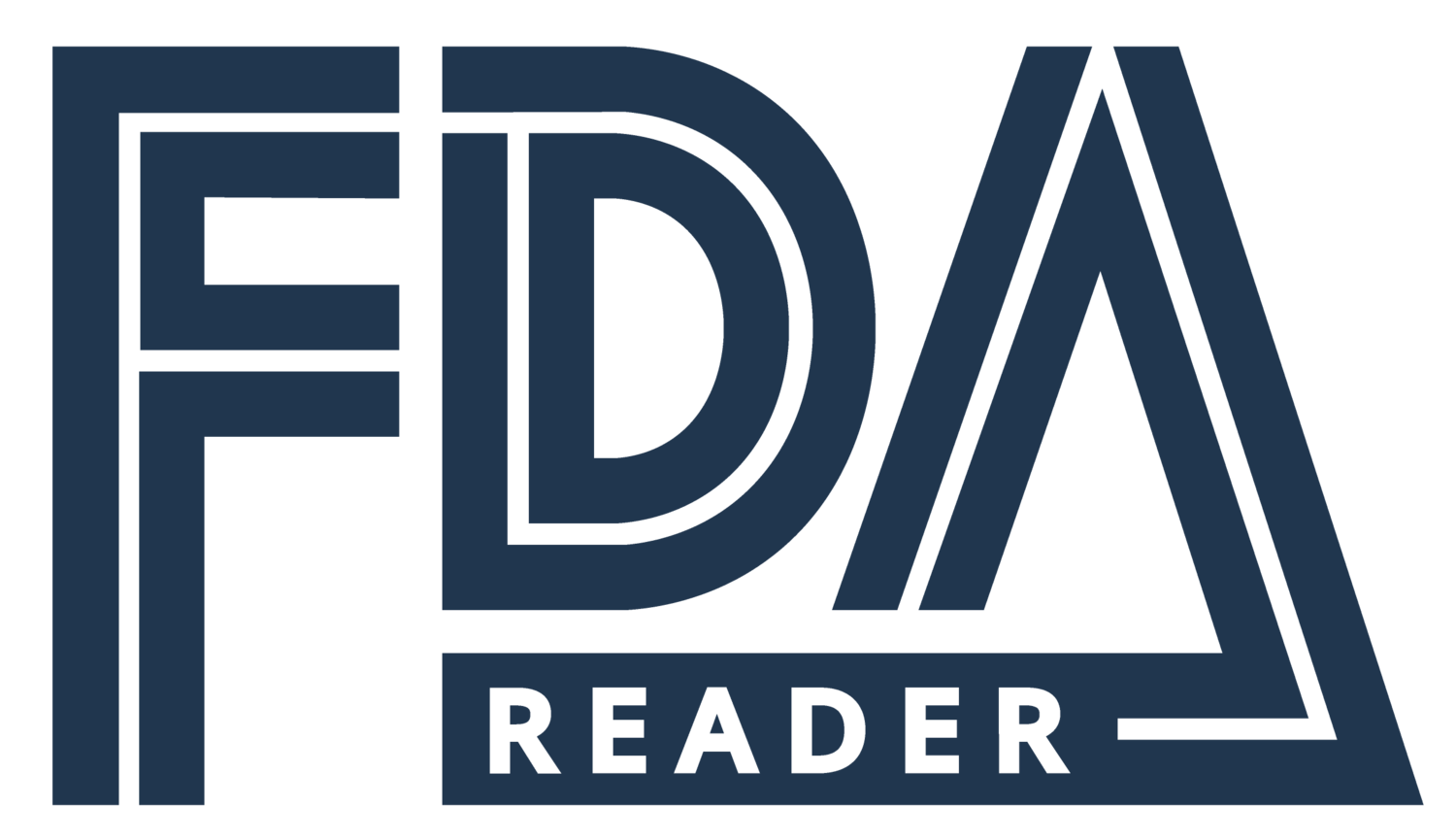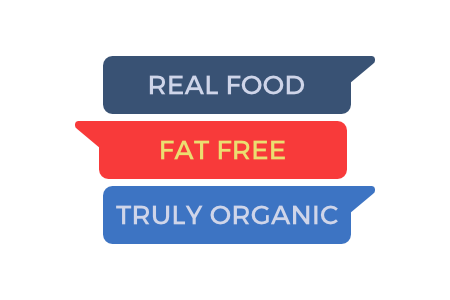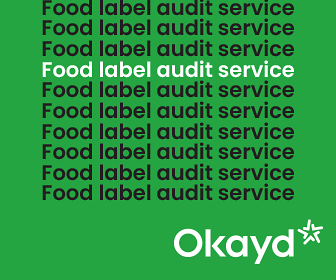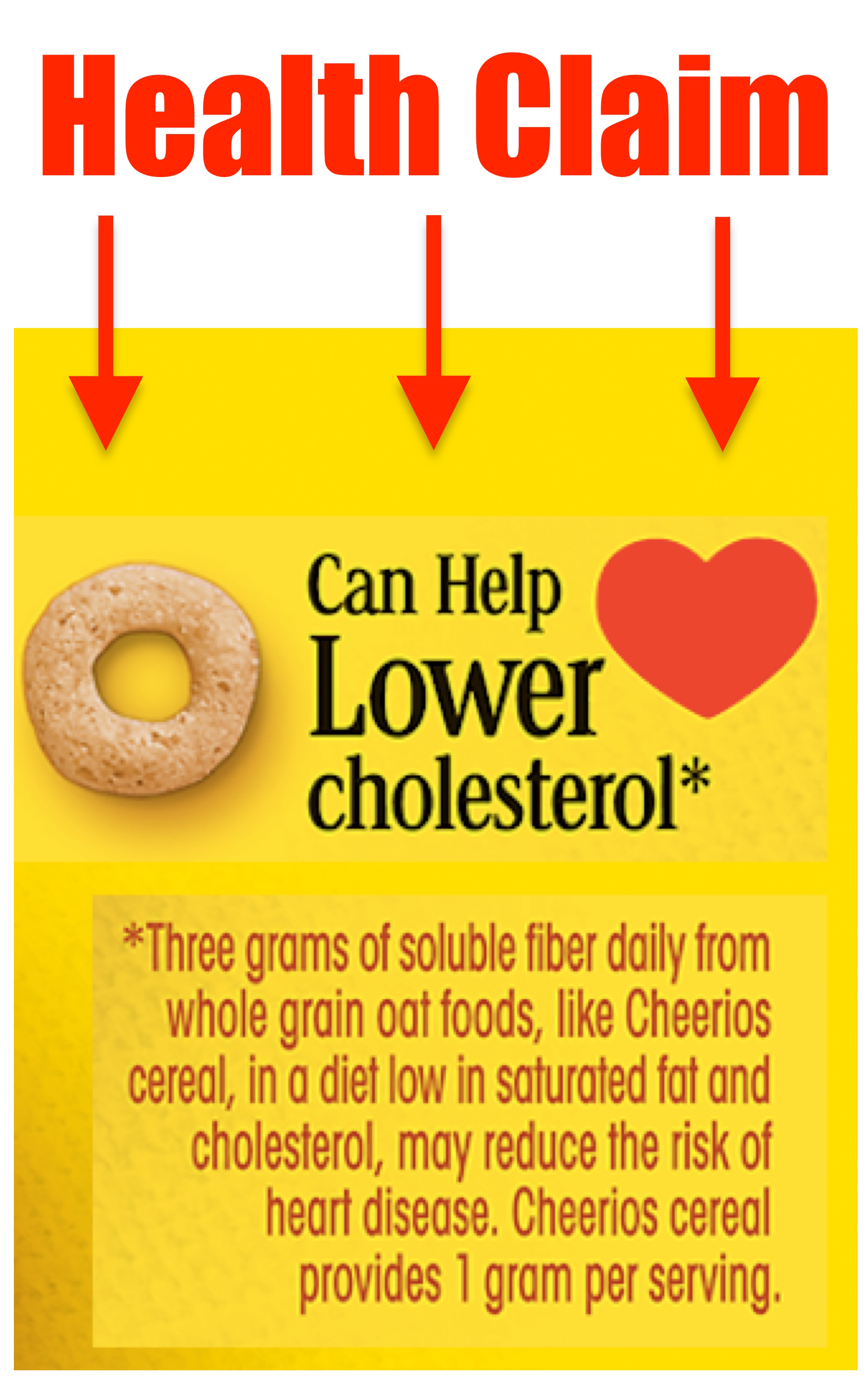- Dietary Lipids and Cancer
- Fiber Containing Grain Products, Fruits, Vegetables, and Cancer
- Fruits, Vegetables, and Cancer
Below is a list of the twelve Authorized Health Claims that can be used on your product label.
You may author your own health claim as it relates to the food-disease relationships listed. However, any health claim you write is subject to the regulations in §101.70 Subpart E Requirements for Health Claims, so it may be easier to pick one of the pre-approved ones below.
Cancer Related Claims
Dietary Lipids and Cancer
Pre-Approved Health Claims
The following authorized health claims are pre-approved for use, subject to the requirements below.
"Development of cancer depends on many factors. A diet low in total fat may reduce the risk of some cancers."
"Eating a healthful diet low in fat may help reduce the risk of some types of cancers. Development of cancer is associated with many factors, including a family history of the disease, cigarette smoking, and what you eat."
Requirements for Using These Claims:
The food must meet the requirement for a "low fat food" (see Nutrition Content Claims).
If you wish to write your own claim on Dietary Lipids and Cancer, see Subpart E -- 101.73
Fiber-Containing Grain products, Fruits, Vegetables and Cancer
Pre-Approved Health Claims
The following authorized health claims are pre-approved for use, subject to the requirements below.
"Low fat diets rich in fiber-containing grain products, fruits, and vegetables may reduce the risk of some types of cancer, a disease associated with many factors."
"Development of cancer depends on many factors. Eating a diet low in fat and high in grain products, fruits, and vegetables that contain dietary fiber may reduce your risk of some cancers."
Requirements for Using These Claims:
The food must be OR contain a fruit, grain, or vegetable
The food must meet the requirements for a "low fat food"
The food must meet the requirements for a "good source of fiber" without fortification
If you wish to write your own claim on Fiber-Containing Grain products, Fruits, Vegetables and Cancer, see Subpart E -- 101.7
Fruits, Vegetables, and Cancer
Pre-Approved Health Claims
The following authorized health claims are pre-approved for use, subject to the requirements below.
"Low fat diets rich in fruits and vegetables (foods that are low in fat and may contain dietary fiber, vitamin A, and vitamin C) may reduce the risk of some types of cancer, a disease associated with many factors. Broccoli is high in vitamins A and C, and it is a good source of dietary fiber."
"Development of cancer depends on many factors. Eating a diet low in fat and high in fruits and vegetables, foods that are low in fat and may contain vitamin A, vitamin C, and dietary fiber, may reduce your risk of some cancers. Oranges, a food low in fat, are a good source of fiber and vitamin C."
Requirements for Using These Claims:
The food must be OR contain a fruit or a vegetable.
The food must meet the requirements for a "low fat" food.
If you wish to write your own claim on Fruits, Vegetables and Cancer, see Subpart E -- 101.78
Risk of Heart Disease Claims
Dietary Saturated Fat, Cholesterol and the Risk of Coronary Heart Disease
Pre-Approved Health Claims
The following authorized health claims are pre-approved for use, subject to the requirements below.
"While many factors affect heart disease, diets low in saturated fat and cholesterol may reduce the risk of this disease"
"Development of heart disease depends upon many factors, but its risk may be reduced by diets low in saturated fat and cholesterol and healthy lifestyles"
"Development of heart disease depends upon many factors, including a family history of the disease, high blood LDL-cholesterol, diabetes, high blood pressure, being overweight, cigarette smoking, lack of exercise, and the type of dietary pattern. A healthful diet low in saturated fat, total fat, and cholesterol, as part of a healthy lifestyle, may lower blood cholesterol levels and may reduce the risk of heart disease"
"Many factors, such as a family history of the disease, increased blood- and LDL-cholesterol levels, high blood pressure, cigarette smoking, diabetes, and being overweight, contribute to developing heart disease. A diet low in saturated fat, cholesterol, and total fat may help reduce the risk of heart disease"
"Diets low in saturated fat, cholesterol, and total fat may reduce the risk of heart disease. Heart disease is dependent upon many factors, including diet, a family history of the disease, elevated blood LDL-cholesterol levels, and physical inactivity."
Requirements for Using These Claims:
The food must meet the requirements for a "low saturated fat food"
The food must meet the requirements for a "low cholesterol food"
If you wish to write your own claim on Saturated Fat, Cholesterol and Coronary Heart Disease Subpart E -- 101.75
Fruits, Vegetables, and Grain Products that Contain Fiber, and the Risk of Coronary Heart Disease
Pre-Approved Health Claims
The following authorized health claims are pre-approved for use, subject to the requirements below.
"Diets low in saturated fat and cholesterol and rich in fruits, vegetables, and grain products that contain some types of dietary fiber, particularly soluble fiber, may reduce the risk of heart disease, a disease associated with many factors."
"Development of heart disease depends on many factors. Eating a diet low in saturated fat and cholesterol and high in fruits, vegetables, and grain products that contain fiber may lower blood cholesterol levels and reduce your risk of heart disease."
Requirements for Using These Claims:
The food must be OR contain a fruit, grain, or vegetable
The food must meet the requirements for a "low saturated fat" food, "low cholesterol" food, or a "low fat" food
The food must contain 0.6g of soluble fiber per serving (without fortification).
The soluble fiber content must de displayed in the nutrition panel.
If you wish to write your own claim on Fruits, Vegetables, and Grain Products that Contain Fiber, and the Risk of Coronary Heart Disease, see Subpart E -- 101.77
Soluble Fiber and the Risk of Coronary Heart Disease
Pre-Approved Health Claims
The following authorized health claims are pre-approved for use, subject to the requirements below.
"Soluble fiber from foods such as [*Insert name of applicable soluble fiber]) of this section and, if desired, the name of food product], as part of a diet low in saturated fat and cholesterol, may reduce the risk of heart disease. A serving of [name of food] supplies ____ grams of the [grams of soluble fiber applicable soluble fiber specified] soluble fiber from [*Insert name of applicable soluble fiber] necessary per day to have this effect."
"Diets low in saturated fat and cholesterol that include ____ grams of soluble fiber per day from [*Insert name of applicable soluble fiber] may reduce the risk of heart disease. One serving of [name of food] provides ____ grams of this soluble fiber."
*Applicable Soluble Fibers: oat bran, rolled oats, whole wheat flour, oatrim, whole grain barley, dry milled barley, barley betafiber, psyllium husk,
Requirements for Using These Claims:
The food product must include at least 0.75g (per amount of the food typically consumed) of one of the following:
Oat Bran
Rolled oats
Whole wheat flour
Whole grain barley and dry milled barley
The food containing oatrim must contain ≥0.75g of beta-glucan soluble fiber per amount of the food typically consumed.
The food containing psyllium husk must contain ≥01.7g of soluble fiber per amount of the food typically consumed.
The amount of soluble fiber must be claimed in the nutrition information label.
The food must meet the requirement for a "low saturated fat" The only acceptable exception is if the food exceeds the requirement for "low fat" food due to fat derived from the whole oat sources.
The food must meet the requirement for a "low cholesterol food".
If you wish to write your own claim on Soluble Fiber and the Risk of Coronary Heart Disease, see Subpart E -- 101.81
Soy Protein and the Risk of Coronary Heart Disease
Pre-Approved Health Claims
The following authorized health claims are pre-approved for use, subject to the requirements below.
"25 grams of soy protein a day, as part of a diet low in saturated fat and cholesterol, may reduce the risk of heart disease. A serving of [name of food] supplies __ grams of soy protein."
"Diets low in saturated fat and cholesterol that include 25 grams of soy protein a day may reduce the risk of heart disease. One serving of [name of food] provides __ grams of soy protein."
Requirements for Using These Claims:
The food must meet the nutrient requirements for a "low fat" food unless it comes from soybeans and contains no additional fat than the fat inherent in those soybeans.
The food must meet the requirements for a "low saturated fat" food and a "low cholesterol" food.
If you wish to write your own claim on Soy Protein and the Risk of Coronary Heart Disease, see Subpart E -- 101.82
Plant Sterol/Stanol Esters and the Risk of Coronary Heart Disease
Pre-Approved Health Claims
The following authorized health claims are pre-approved for use, subject to the requirements below.
For Plant Sterol Esters:
"Foods containing at least 0.65 g per serving of plant sterol esters, eaten twice a day with meals for a daily total intake of at least 1.3 g, as part of a diet low in saturated fat and cholesterol, may reduce the risk of heart disease. A serving of [name of the food] supplies ___grams of vegetable oil sterol esters."
"Diets low in saturated fat and cholesterol that include two servings of foods that provide a daily total of at least 1.3 g of vegetable oil sterol esters in two meals may reduce the risk of heart disease. A serving of [name of the food] supplies ___grams of vegetable oil sterol esters."
For Plant Stanol Esters:
"Foods containing at least 1.7 g per serving of plant stanol esters, eaten twice a day with meals for a total daily intake of at least 3.4 g, as part of a diet low in saturated fat and cholesterol, may reduce the risk of heart disease. A serving of [name of the food] supplies ___grams of plant stanol esters."
"Diets low in saturated fat and cholesterol that include two servings of foods that provide a daily total of at least 3.4 g of vegetable oil stanol esters in two meals may reduce the risk of heart disease. A serving of [name of the food] supplies ___grams of vegetable oil stanol esters."
Requirements for Using These Claims:
The food must contain ≥ 0.65g of applicable plant sterol* esters per amount typically consumed.
The food must contain ≥ 1.7g of plant stanol esters per amount typically consumed. Note that only certain food products are eligible to make this claim, including spreads, salad dressings, snack bars, and dietary supplements.
The food must meet the nutrient requirements for a "low saturated fat" food and a "low cholesterol" food.
The food must meet the limit for total fat per 50g -- except for spreads and salad dressings, which can exceed this limit if they have a disclosure statement such as, "see nutrition information for fat content"
Except for salad dressing, the food must meet the minimum nutrient requirement (see §101.14(e)(6)).
*Applicable Plant Sterols: prepared by esterifying a mixture of plant sterols from edible oils with food-grade fatty acids. The plant sterol mixture shall contain at least 80% beta-sitosterol, campesterol, and stigmasterol (combined weight).
*Applicable Plant Stanol Esters: Plant stanol esters prepared by esterifying a mixture of plant stanols derived from edible oils or byproducts of the kraft paper pulping process with food-grade fatty acids. The plant stanol mixture shall contain at least 80 percent sitostanol and campestanol (combined weight).
If you wish to write your own claim on Plant Sterol/Stanol Esters and the Risk of Coronary Heart Disease, see Subpart E -- 101.83
Other Health Claims
Sodium and Hypertension
Pre-Approved Health Claims
The following authorized health claims are pre-approved for use, subject to the requirements below.
"Diets low in sodium may reduce the risk of high blood pressure, a disease associated with many factors."
"Development of hypertension or high blood pressure depends on many factors. [This product] can be part of a low sodium, low salt diet that might reduce the risk of hypertension or high blood pressure."
Requirements for Using These Claims:
The sodium must me the requirements for a "low sodium" food (see "low sodium requirements")
If you wish to write your own claim on Sodium and Hypertension, see Subpart E -- 101.74
Calcium, Vitamin D and Osteoporosis
Pre-Approved Health Claims
The following authorized health claims are pre-approved for use, subject to the requirements below.
"Adequate calcium throughout life, as part of a well-balanced diet, may reduce the risk of osteoporosis."
"Adequate calcium as part of a healthful diet, along with physical activity, may reduce the risk of osteoporosis in later life."
"Adequate calcium and vitamin D throughout life, as part of a well-balanced diet, may reduce the risk of osteoporosis."
"Adequate calcium and vitamin D as part of a healthful diet, along with physical activity, may reduce the risk of osteoporosis in later life."
Requirements for Using These Claims:
If the claim references Vitamin D, then the food must exceed the requirements for a "high" level of vitamin D (see here)
The calcium in the food must be absorbable as a nutrient.
There may not be more phosphorus than calcium in the food (by weight.)
If you wish to write your own claim on Calcium, Vitamin D, and Osteoperosis, see Subpart E -- 101.72
Folate and Neural Tube Defects
Pre-Approved Health Claims
Neural tube defects are a birth defect of the brain or spinal cord that can lead to disability or infant mortality.
The following authorized health claims are pre-approved for use, subject to the requirements below.
"Model health claim appropriate for foods containing 100 percent or less of the DV for folate per serving or per unit. The example contains all required elements plus optional information: Women who consume healthful diets with adequate folate throughout their childbearing years may reduce their risk of having a child with a birth defect of the brain or spinal cord. Sources of folate include fruits, vegetables, whole grain products, fortified cereals, and dietary supplements."
"Model health claim appropriate for foods intended for use by the general population and containing more than 100 percent of the DV of folate per serving or per unit: Women who consume healthful diets with adequate folate may reduce their risk of having a child with birth defects of the brain or spinal cord. Folate intake should not exceed 250% of the DV (1,000 mcg)."
The following health claims may be used if the food contains 100% or less of the daily value for the serving per-unit.
" Healthful diets with adequate folate may reduce a woman's risk of having a child with a brain or spinal cord birth defect."
"Adequate folate in healthful diets may reduce a woman's risk of having a child with a brain or spinal cord birth defect."
Requirements for Using These Claims:
The food must meet the minimum requirements for a "good source of folate"
The foods must not contain more than 100% of the daily recommended intake for vitamin A as retinol per serving.
The foods must not contain more than 100% of the daily recommended intake of preformed vitamin A or D per serving.
The nutrition information label must include information about folate.
*Note there are additional requirements for dietary supplements
If you wish to write your own claim on Folate and Neural Tube Defects, see Subpart E -- 101.72
Dietary Sweeteners and Dental Tooth Decay
The title of this section in the legislation is "Dietary Noncariogenic Carbohydrate Sweeteners and Dental Caries"
Pre-Approved Health Claims
The following authorized health claims are pre-approved for use, subject to the requirements below.
"Frequent eating of foods high in sugars and starches as between-meal snacks can promote tooth decay. The sugar alcohol [name, optional] used to sweeten this food may reduce the risk of dental caries."
"Frequent between-meal consumption of foods high in sugars and starches promotes tooth decay. The sugar alcohols in [name of food] do not promote tooth decay."
"Frequent eating of foods high in sugars and starches as between-meal snacks can promote tooth decay. [*insert the applicable sweetener from the list below], the sugar used to sweeten this food, unlike other sugars, may reduce the risk of dental caries."
"Frequent between-meal consumption of foods high in sugars and starches promotes tooth decay. [*insert the applicable sweetener from the list below], the sugar in [name of food], unlike other sugars, does not promote tooth decay."
"Frequent eating of foods high in sugars and starches as between-meal snacks can promote tooth decay. Sucralose, the sweetening ingredient used to sweeten this food, unlike sugars, does not promote tooth decay."
Shortened Claims for Use on Small Packages:
"Does not promote tooth decay."
"May reduce the risk of tooth decay."
"[*insert the applicable sweetener from the list below] sugar does not promote tooth decay."
"[*insert the applicable sweetener from the list below] sugar may reduce the risk of tooth decay."
*Applicable Sweeteners: xylitol, sorbitol, mannitol, maltitol, isomalt, lactitol, hydrogenated starch hydrolysates, hydrogenated glucose syrups, erythritol, D-tagatose, isomaltulose, sucralose."
Requirements for Using These Claims:
The product must meet the requirement for sugar content claims
If you wish to write your own claim on Dietary Sweeteners and Dental Tooth Decay, see Subpart E -- 101.80 Dietary Non-Cariogenic Carbohydrate Sweeteners and Dental Caries




























